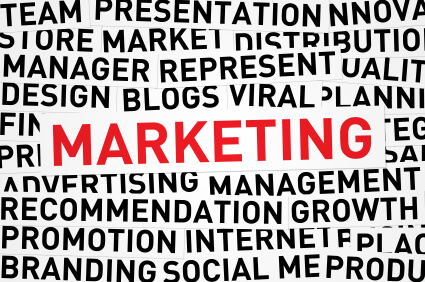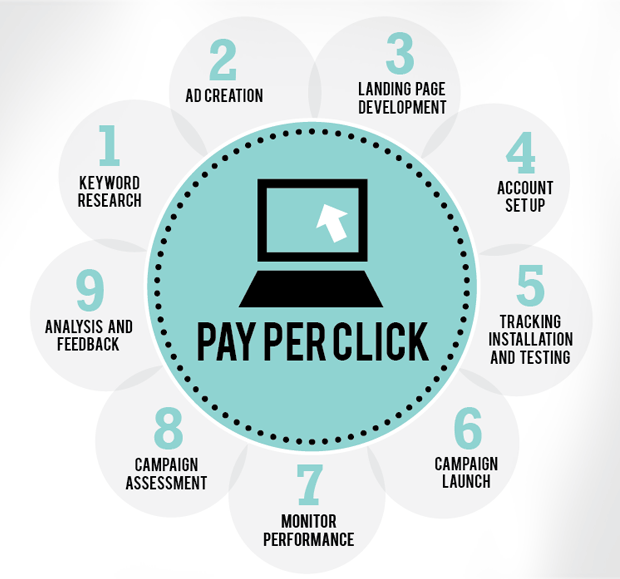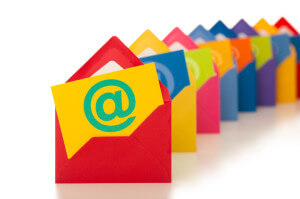Digital marketing can be a difficult topic for doctors to understand due to their many other responsibilities and areas of expertise they are required to manage as a healthcare professional. The first step to understanding digital marketing or marketing in general for that matter, is to have a grasp of the commonly used terminology.
It isn’t necessary to memorize all of these terms, but it is important to be familiar with them to be able to understand your marketing needs and discuss them effectively. Below is a guide to decipher commonly used digital marketing lingo, categorized by marketing channel.
Use this as the ultimate cheat sheet when discussing how to market your practice:
1. Search Engine Optimization:
Alt Image Tags – This is the description for an image also known as “alternative text”, originally developed to identify images for the blind. Search engines cannot read an image; this description describes the image to the search engine.
Black Hat SEO – This term is used to describe bad, distasteful and deceptive SEO practices. This could include buying links, keyword stuffing, link networks or other illegal methods as defined by the rules and regulations of the search engines.
Conversion – When a person successfully completes an action on your website. Once completed, this transaction is known as a conversion because the web visitor bought something, downloaded something, read something etc.
Domain – The main web address of your site (example: www.referralmd.com). Choose your domain based on a your practice name (most ideal), keywords about your company or a combination of both. Search engine rankings favor websites with longer registrations because it shows commitment.
Headings – Text on your website that is placed inside of a heading tag, such as an H1 or H2. This text is often presented in a larger and stronger font than other text on the page. These are often the titles of a section of text in an article or on a page.
HTML – The code that makes up your website that search engines read to decipher the information on it. Keep your HTML as clean as possible to help the search engines rank your website.
Internal & External Links – Internal links take a visitor from one web page on the same website to another. External Links refer to linking a page to another page on a different website. Both are crucial for SEO.
Keyword – A word that a user enters in the search engines like Google, Bing or Yahoo. Each web page of your website should be optimized with the goal of drawing in visitors who have searched specific keywords related to your practice.
Link Bait – This is a slang SEO term associated with some forms of content that people would want to link to on your website. The more quality, diverse links to your website the better search engines will rank your website. This could be an online tool, resource guide, infographic, visual or other original info.
Link Building – The activity and process of getting more inbound links to your website for improved search engine rankings. This can be achieved through guest blogging, through creating quality content (link bait) or through building strong relationships.
Longtail Keywords – This refers to the search phrase that is made up of two or more words. The more words in a keyword phrase, the more exact the search will be. It is easier to rank for a longtail keyword because of less competition. Therefore, it is most ideal to target many longtail phrases that you’ll be able to rank for as opposed to a few high trafficked keywords that could take years to rank for.
Metadata – Data that tells search engines what your website is about like title tags, meta descriptions, the header tags etc.
Meta Description – A brief description of fewer than 160 characters of the contents of a page and why someone would want to visit it after seeing it displayed on search engine results pages below the page title. This is not taken into consideration by the search engines but by users deciding to click on your website from search engine results.
Meta Keywords – Previously used by search engines in the 90s and early 00s to help determine what a web page was about, the meta keywords tag is no longer used by any major search engines due to widespread misuse by website owners and search engine marketers. Do not use meta keywords; they no longer have a purpose.
Organic Traffic – Organic traffic refers to the free or non-paid traffic a website receives from another website, from the search results, from a video etc. Paid traffic on the other hand, is when someone arrives at a site through clicking on ads.
PageRank – A number from 0-10, assigned by Google, indicating how good your overall SEO is. Do not stress over these rankings from 0-10, rankings are important but mostly the revenue or conversions from those rankings is what is important.
RSS Feed – RSS stands for ‘really simple syndication.’ It is a subscription-based way to get updates on new content from a web source like a blog. Set up an RSS feed for your website or blog to help readers automatically receive new blog posts or content.
Sitemap – A document created by yourself, a webmaster or a piece of software that provides a map of all the pages on a website to make it easier for a search engine to index that website. It is a hierarchy, a web if you will, of how your website is broken down into different sections and categories.
Spider – Spiders are software programs used by search engines for locating and indexing all web pages and websites on the internet, especially taking a look at your website’s sitemap to understanding the hierarchy of your content. Often referred to as “crawlers” or “robots”, they travel from links on one webpage to another, indexing or capturing the flow of your website’s pages along the way.
Traffic – The visitors to your site coming from various sources online.
Title Tag – The title of a page on your website, which is enclosed in a HTML tag, inside of the head section of the page, as well as appearing at the top of your web browser. It appears in search engine results as the title of a particular page, telling people what your website is about and informing the search engines the topic of that web page and how it relates to the other pages throughout your website.
URL – The web address of a page on your site (example: www.referralmd.com).
White Hat SEO – This term refers to honorable and good quality SEO techniques supported by the search engines as the right approach to getting your website found for the right keywords. Typically it is focused on improving the user experience for more relevant traffic and more revenue and is what Google and the major search engines prefer.
2. Social Media Marketing:
Algorithm – An algorithm is a set of formulas developed for a computer to perform a certain function like what is used by Google to determine what keywords bring up what websites and by Facebook to determine what content comes up in your news feed.
Bitly – Bitly is a free URL shortening tool that shortens a longer URL to be more easily shareable on Twitter (with its 140 character limit) and elsewhere. These shorten links can be tracked to provide actionable insights on the sources of traffic and how often something is clicked.
Comment – A comment is a response that is often provided as an answer or reaction to a blog post or content on a social network like on Facebook or Google+. Comments are one of the primary forms of two-way communication on the web, especially with social media.
Connections – The LinkedIn equivalent of a Facebook ‘friend’ is a ‘connection.’ Connections don’t have to be a close friend or a drinking buddy, but more so, colleagues and other professional contacts that you know or know of in the industry.
Engage – If you are communicating to other social media users through your channels, this is referred to as engagement as a business or an individual.
Facebook – Facebook is a social network that connects people with friends and others who work, study, and live around them. Facebook is the largest social network in the world with 1.11 billion people using the site each month.
Foursquare – Foursquare is a social network in which friends share their locations and connect with others in close physical proximity to each other by “checking in”. The platform rewards users for checking in at certain businesses by giving discounts or exclusive offers from the businesses. It also serves as a tool to find the type of businesses around you that are recommended by friends.
Google+ – Google+ is Google’s social network. It differs from other social networks due to its SEO benefits as well as its ability to group other users into circle, creating 1-on-1 conversation.
Hashtag – A hashtag is a tag used on Twitter, Google+, Instagram and other social channels as a way to annotate a message, which helps compile all the messages with that tag in one place to analyze and view all the conversations happening around a particular subject. Hashtags are commonly used to show a message that is related to an event, trend, marketing campaign, contests, or conferences, online or offline.
Influence – An individual’s importance online determined by their following, reach and how often their followers engage with them and vice versa.
Instagram – Instagram is a photo-sharing app that is owned by Facebook, it allows people to take photos and then add filters to help make the photo more appealing. Users can like and comment on each others photos to spur discussions and spread a photo to reach a larger audience on a network.
Like – A “Like” is an action that can be made by a Facebook user, now on LinkedIn, Instagram and other social networks. A “like” denotes approval by a user on a particular piece of content shared, which is the easiest way to interact and help share the moment on a social network.
LinkedIn – LinkedIn is a business-oriented social networking site. LinkedIn is for professionals to join groups, have business related discussions with other like-minded professionals, find jobs or opportunities and connect with others in their field.
Podcast – A podcast is a series of digital media files, either audio or video, that are released in episodes and often downloaded through an RSS feed on a mobile phone or device for listening at a viewer’s convenience. Many professionals have started their own podcasts to build an audience and help educate others on their particular expertise.
Retweet – A retweet is when someone on Twitter sees your message and decides to re-share it with his/her followers. If the retweet button is pressed, the original tweet will show up as it was tweeted with attribution to the original tweeter on a person’s profile and in their feed to followers even if these followers aren’t following the original tweeter.
Twitter – A microblogging social network that allows users to only share 140 characters of text, links and other media with their followers known as tweets. Twitter has a mainstream, diverse following, making it a social network that is suited for individuals and businesses of all backgrounds. Twitter is one of the quickest ways to scale a message to a large audience online.
Trending – A word, phrase or topic that is popular on Twitter at a given moment.
Viral – Anything shared across the web that gets passed along rapidly to a large audience, like this photo of Obama on Twitter or this video on YouTube from Kmart.
3. Pay Per Click Advertising:
Ad Copy – The headline, descriptive text and display URL used on a PPC ad to persuade people to visit your website from the top of the search engine results.
Bid Price – The maximum amount of money your business is willing to pay for the keywords targeted in a PPC campaign.
Click Through Rate (CTR) – Click through rate is the number of clicks your PPC ad receives divided by the number of times your ad is shown in the search engines. A keyword’s CTR is a strong indicator of its relevance to the user and the overall success of the ad, which is important to ensure that an ad is continually in the search results.
Conversion Rate – The conversion rate is the number of conversions divided by the number of ad clicks on your PPC ad. A conversion is when a visitor interacts with your site, whether it is by purchasing or inquiring, as a result of clicking on the original PPC ad at some point in the sales funnel.
Cost Per Click (CPC) – The amount of money a business pays when someone clicks through from an ad displayed for one of your search terms, which is impacted by competition on that keyword, the quality score and the click through rate.
Google AdWords – The name for the PPC advertising network owned and run by Google. This is the most widely used PPC platform over the other services Yahoo or Bing offer.
Impressions – The amount of times your advertisement comes up in response to a specific search term.
Keyword – The word or phrase somebody searches for that you bid on. With relevant keywords, your ads will only appear to the most relevant customers, who are most likely to convert. Therefore, increasing your conversion rate, lowing your CPC, and raising your ad position due to the increased quality of your PPC ads.
Landing Page – The specific web page a visitor gets when they click on your ad. Landing pages should be optimized to ensure a web visitor is likely to convert.
Quality Score – This is the ranking method used on the Google Adwords system. It is based on an ads CPC, CTR and relevancy with other competitors. The higher a keyword’s Quality Score, the lower its minimum bid and the better its ad position.
4. Email Marketing:
Above the fold – The part of an email message that is visible without scrolling down. The content in an email above the fold is the most important because it is what a person sees and possibly reads first.
Bounce – An email that is rejected by the receiving mail system is said to have bounced. An email can bounce for many reasons, mainly if the email address is no longer valid or your email was regarded as spam.
Click-Through Rate – CTR is clicks divided by emails sent. For example, if you sent an email to 1000 people and 120 of them clicked on one or more links, your click-through rate would be 12%.
Open Rate – The open rate is the number of emails opened compared with the number sent. In other words, if you send a campaign to a list of 100 addresses, and 22 emails were opened, you’d have a 22% open rate. This doesn’t necessarily mean the email was read, but that it was opened. Check the CTR as compared to the open rate to drive true insights.
Subject Line – Copy that identifies what an email message is about, often designed to entice the recipient into opening the message. The subject line is the first element a user sees, next to who the email is from, which determines whether they will open the email or not. Optimize your subject lines to be simple, short and enticing to help increase your open rates.
Subscribe – The process of joining a mailing list to receive messaging from a business or organization in the future.
Subscriber – A person who has specifically requested to join a mailing list. A email list is made up of subscribers that choose to become a part of your list overtime.
5. Content Marketing or Inbound Marketing:
Blog Post – An article on your blog about a particular topic that educates your audience about an issue, informs them of news or highlights your organization’s unique perspective on an industry trend. Blog posts can range in length from 250 words to 5000 words, but there are no official rules on brevity or length.
Content Curation – The act of gathering content from other sources online to pull together a perspective on a topic. Using social media content, articles, images and other media to comment on a topic with your own input and perspective.
Content Aggregation – The act of pulling together content from other sources, often automatically and not often adding in your organizations perspective on the content being compiled. Content aggregation is often done by software or an algorithm with little to no editorial input from a person.
Earned Media – Earned media is advertising through promotional efforts that are organic and not paid for. Exposure on social media through a customer’s testimonial or Facebook photo is an example of earned media. In a nutshell, earned media is word of mouth about your organization.
eBook – An eBook is a short book read online or on a digital device, often used as a longer piece of content to drive value to audiences for an organization online. An eBook is a resource more comprehensive than a blog post, but less extensive than a textbook.
Newsjacking – The process of using a recent story or event in the news and applying it to your organization for marketing purposes. Newsjacking, when done right, can bring your organization into an ongoing conversation, while still representing your offerings as a business and perspective to your existing audience.
Owned Media – Media that your organization fully or partially controls like a website (full-control) or Facebook Page (partial control). Using owned media is cost efficient and takes time to scale.
Paid Media – Advertising paid for by an organization like print, television, radio, paid search, direct mail etc. Paid media can be used in conjunction with other forms of media like owned or earned to create a 360-degree campaign from different marketing channels.
Images courtesy of DM Confidential, Media C, The Media Work, HW Production and Wind Mill Networking.














